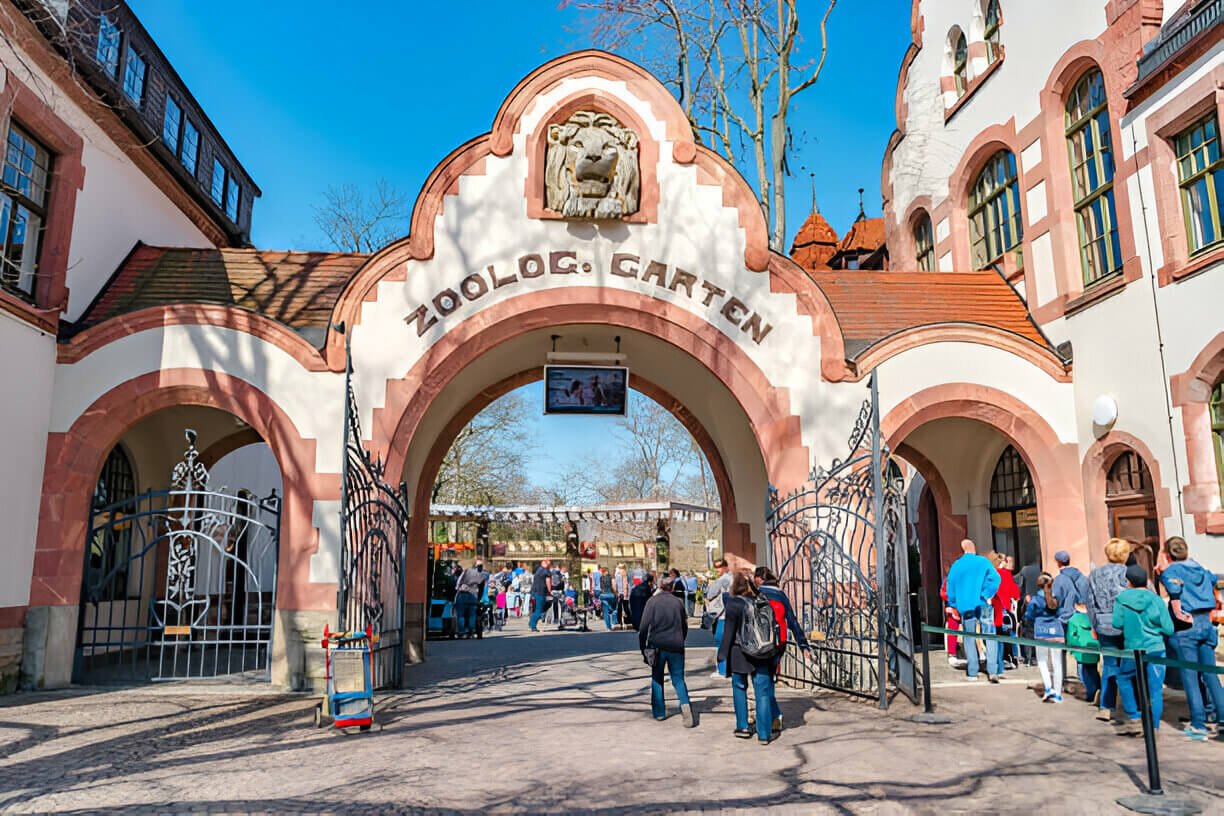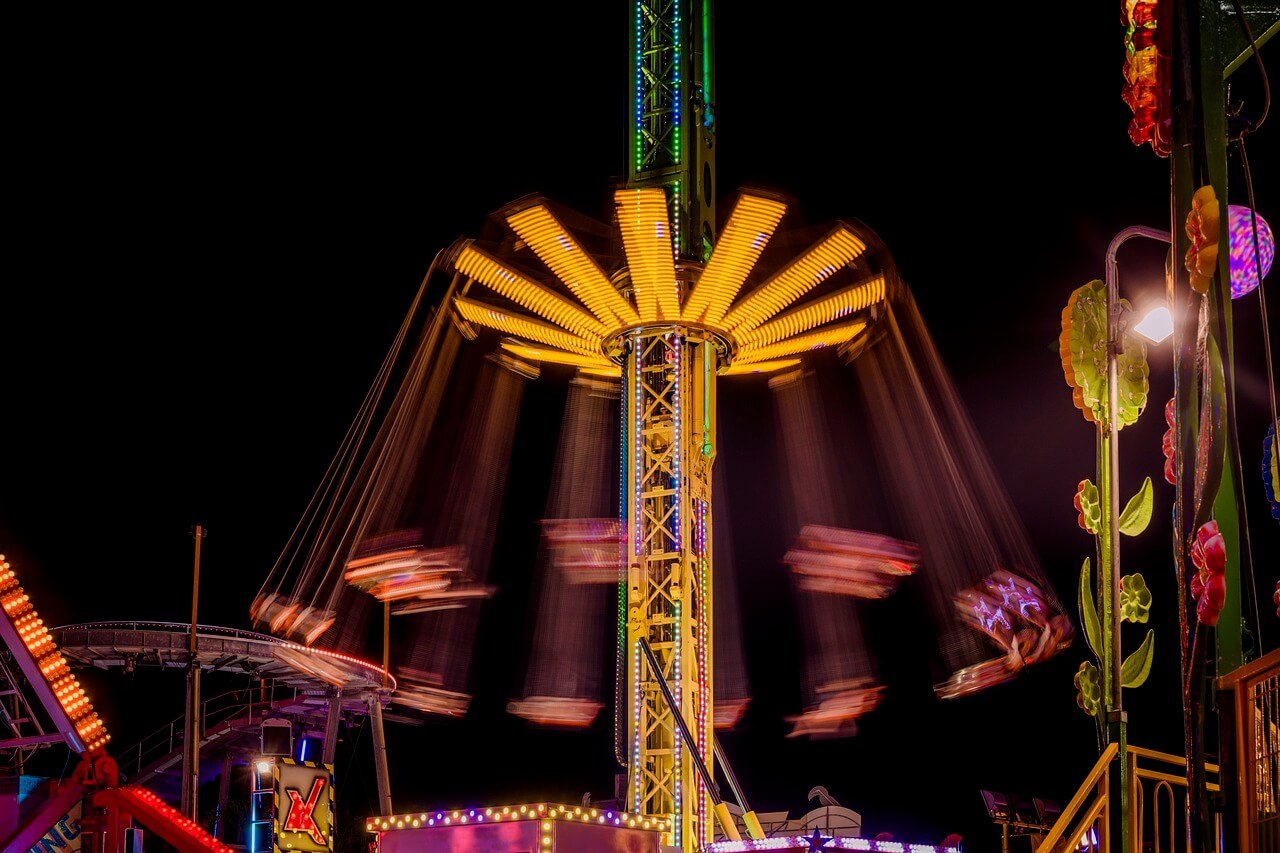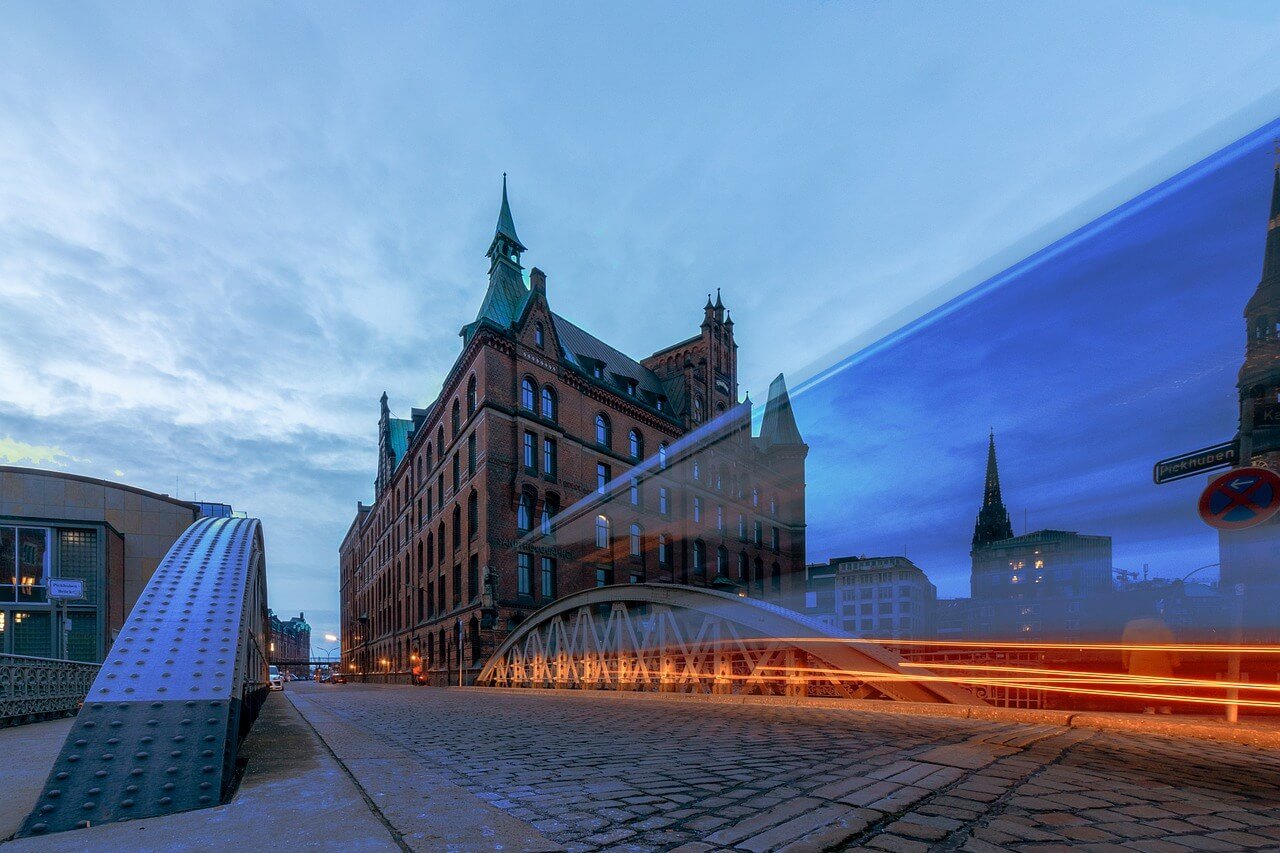Heidelberg is the perfect place to visit if you want to take in the breathtaking scenery of Germany’s Rhineland, with its verdant forests, historic buildings, and abandoned castles. Heidelberg has long been a popular travel destination due to its stunning setting on the Neckar River in southwest Germany, dating back to the 1800s.
Heidelberg captures the essence of the romantic Rhineland and has been praised by poets like Goethe, painted by artists like Turner, and rhapsodized by composers like Schumann. Being the oldest university town in the nation, it’s also a surprisingly vibrant city with a wide selection of student-friendly pubs and eateries. Given all Heidelberg has to offer, it’s understandable why so many people view this German city as a must-see when traveling throughout Europe.
19. Student Jail

The former Student Jail at Heidelberg University is a fascinating historical site worth seeing, located back near the center. Its little rooms covered in graffiti, called the Studentenkarzer in German, are today guarded as a component of a museum.
From 1778 to 1914, it housed the nation’s oldest prison of its kind, where disruptive students were imprisoned. Some infractions were good for a two-day stay in the filthy jail, but other offenses could land you there for up to a month. Its grubby old walls were covered in hilarious remarks, observations, and drawings made by the prisoners as a way to kill time.
Over time, students’ spending a few nights in jail became nearly a rite of passage. This could be for acting inebriated, pulling practical jokes, or even duelling, which is a very serious offense. During our tour of the university town, we found the Student Jail to be an enjoyable and brief stay.
18. Carl Theodor Bridge

The Prince Elector who gave the order for the bridge’s construction in the 1780s is honored in the name of the iconic Carl Theodor Bridge in Heidelberg. The pedestrian-only sandstone bridge spans the Neckar River and links the city’s mountainous north side with the old town center.
The town’s fortifications formerly included the twin-towered medieval bridge gate on the old-town side. To the west of the gate, tourists frequently stop for a picture in front of the Heidelberg Bridge Monkey.
The mirror-wielding bronze monument serves as a reminder that no matter where life takes them, humans are essentially the same.
17. Zoo Heidelberg
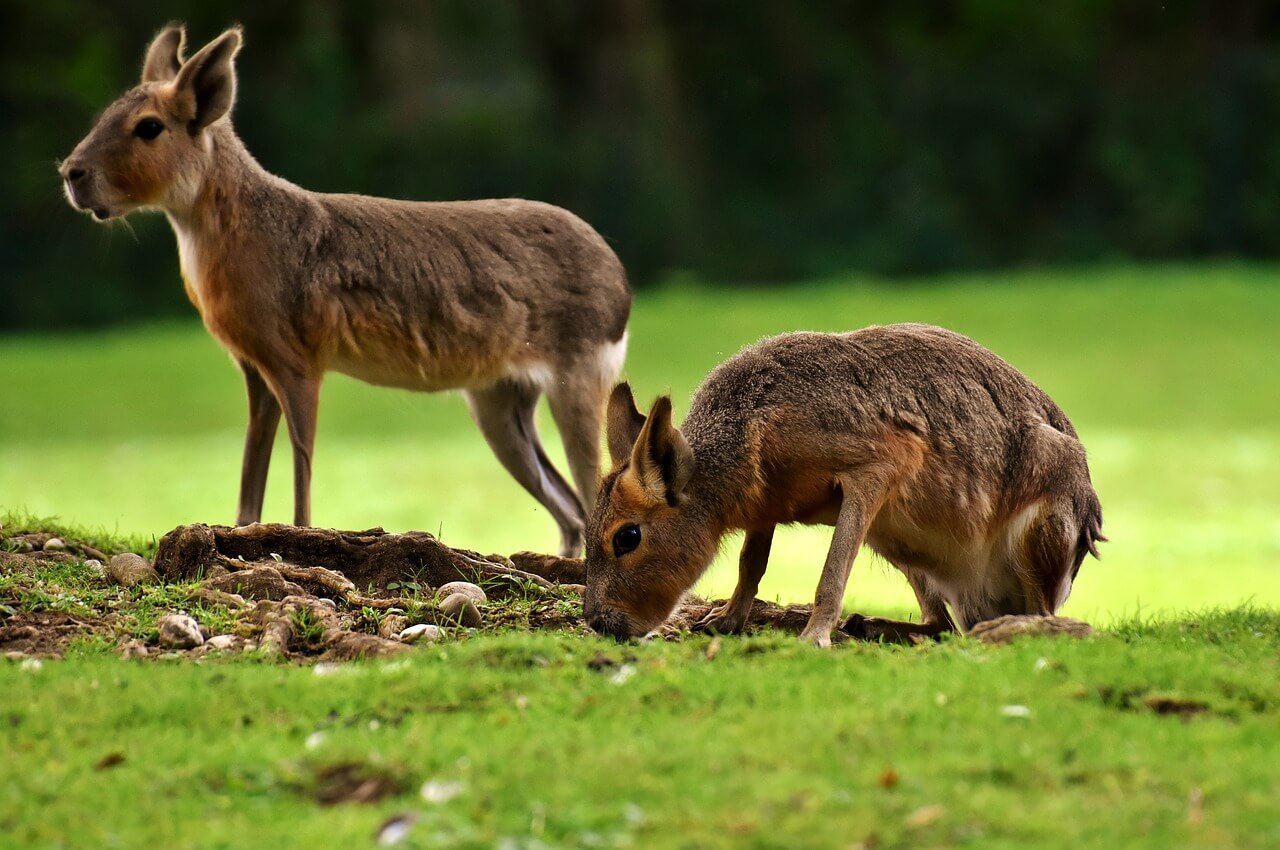
Zoo Heidelberg, one of the greatest family-friendly activities in Heidelberg, has a sizable collection of animals from all over the world. Its expansive enclosures, which mirror their natural environment and include playgrounds and snack stands scattered throughout, are located around a bend in the river.
Since its establishment in 1934, more around 2,000 animals, including birds and reptiles of about 150 different species, are kept there. These include Asian elephants, gorillas, and red roos in addition to lions and Sumatran tigers. In addition, visitors can take in entertaining feeding demonstrations and educational keeper talks featuring some of the amiable animals at the zoo.
The animals appear content and at ease as you stroll through the vast, verdant surroundings that are immaculately maintained. Seeing its adorable animals after all the sightseeing is a delightful diversion from the museums and old buildings of Altstadt.
16. Schloss Schwetzingen
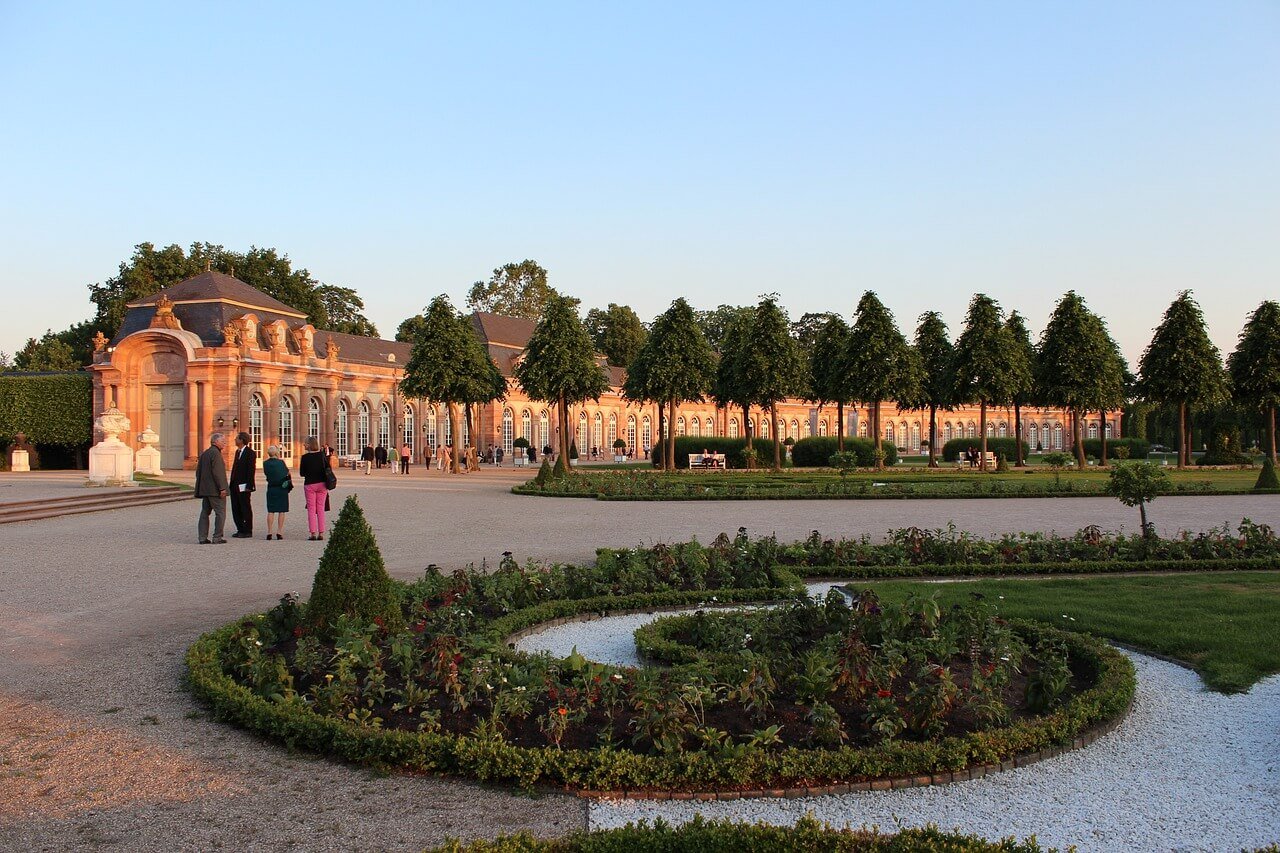
Heidelberg is only fifteen minutes’ drive directly west to the magnificent Schloss Schwetzingen and its well-kept grounds. In addition to strolling around its well-known gardens, guests may explore lavish suites replete with antiques, custom furniture, and tasteful decor.
The enormous palace, which served as the Palatinate Electors’ vacation home, was constructed between 1700 and 1750. You can discover more about the remarkable architecture and the numerous notable counts who have called this place home via guided tours. But its amazing Rococo-style theater, overlooked by opulent arcades and a stunningly painted dome, is unquestionably the centerpiece.
Its grounds, which cover a vast expanse, have both French formal gardens and English-style landscape gardens. In addition to admiring their splendor, you may explore the magnificent theater of Apollo, the old, elaborate mosque, and the Italianate bathhouse that are surrounded by grass and fountains.
15. Jesuitenkirche

The breathtaking Jesuitenkirche is situated in Heidelberg’s historic center. Situated near the castle, it is easily accessible from the bustling Hauptstrasse and Universitatsplatz.
Constructed between 1712 and 1759, the stunning church features some of the best examples of Baroque architecture. Its inside is painted a startlingly dazzling white, with only a few statues and paintings gracing the walls, despite its exquisite red sandstone front. With just a few sparkling gems catching your eye here and there, the subtle style gives it an air of elegance.
You may take in its lovely pulpit and glistening chandeliers in addition to its magnificent organ and altar picture. It’s a fantastic area to stop by while visiting the Altstadt because of its peaceful atmosphere.
14. Palatinate Museum
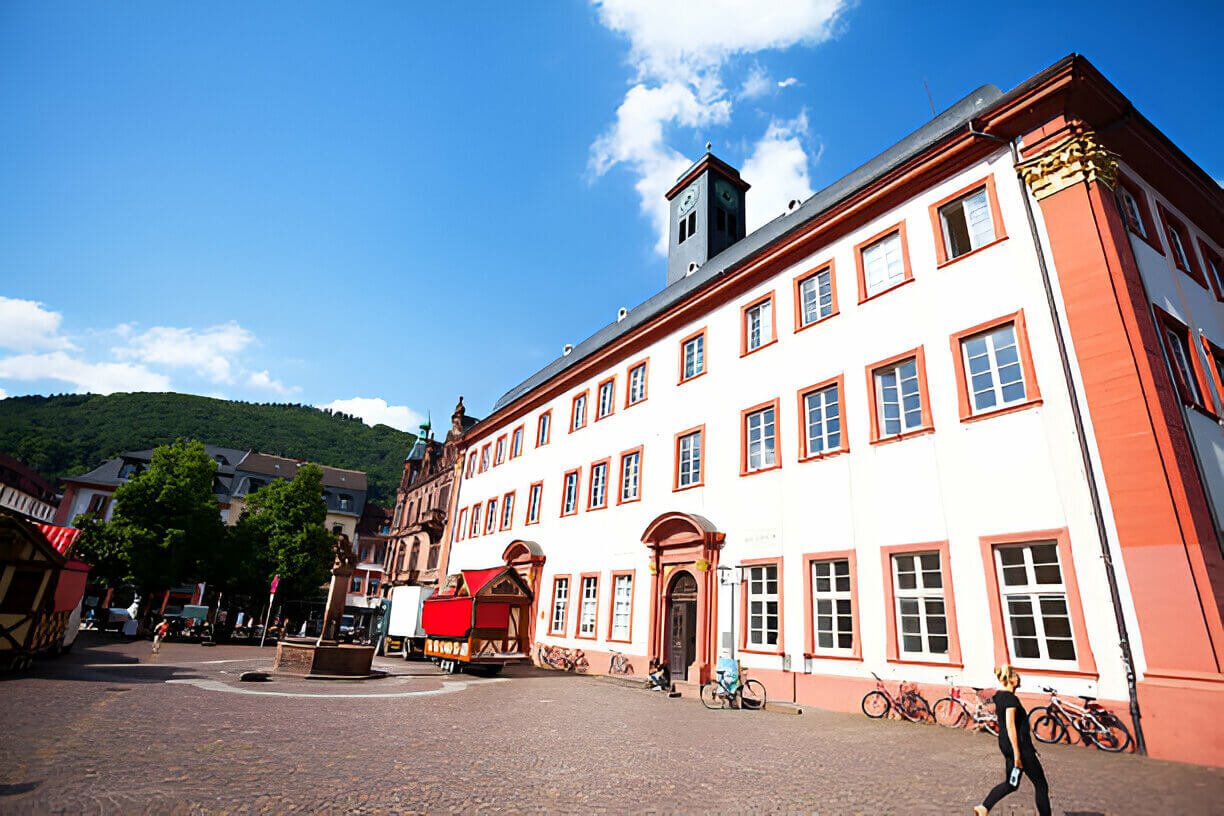
The superb Palatinate Museum is a must-visit for anybody interested in the rich historical and artistic legacy of the city. Situated in close proximity to the church, this three-story building is brimming with exquisite china, sculptures, and paintings.
Established in the latter part of the 1870s, the remarkable Palais Morass on Hauptstrasse currently houses its singular and vast collection. Its opulent rooms, which were formerly home to university professors, are now filled with artifacts ranging from intricate drawings and archeological discoveries to antique clothing, coins, and glassware.
In the Lower Neckar Valley, remarkable paintings and ancient sculptures coexist with informative displays on human history. Explore a few opulent apartments that include exquisite furnishings and embellishments from the 18th and 19th centuries. But its finely carved Altar of the Apostles, created in 1507 by master sculptor Tilman Riemenschneider, is the centerpiece.
13. Heidelberg Tun
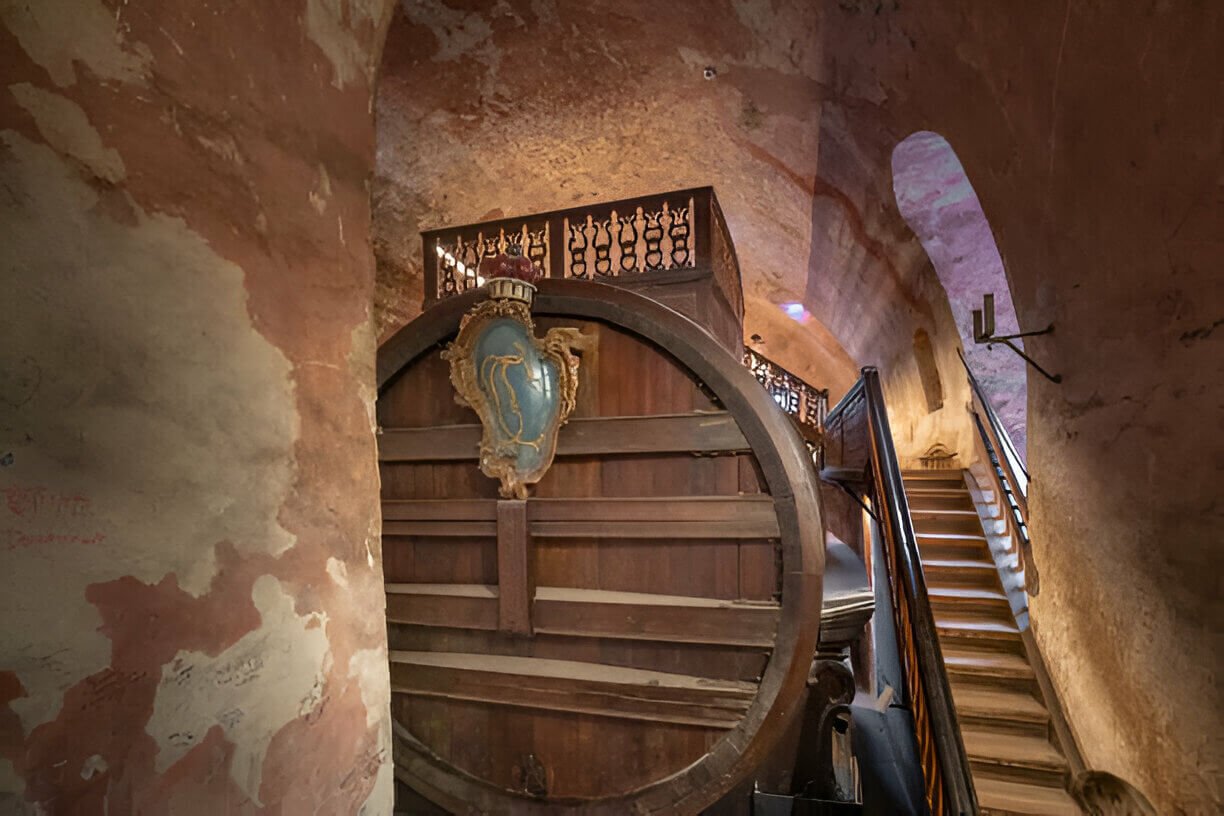
CHANGING THE CONCEPT OF “DRINKING A TON,” Heidelberg Castle’s nearly absurdly large wine cask, dubbed the Heidelberg Tun, is a unique liquor barrel that, although being empty for the majority of its existence, has been generating visions of world-shattering inebriation for hundreds of years.
Constructed in 1751, the enormous wooden barrel was the third of its kind to be built in the region, but it is now the only one still standing. Although it might appear that the tun was intended to be a curiosity, it actually had a far more practical use. When it was first established, public taxes were paid for with products, which meant a lot of government wine in a region known for its wine production. Giant barrels were made to store all of the given alcohol, and all of the tributes were gathered into an obviously disgusting sludge.
The barrel served as a coffer for taxes, although it was usually empty. Hatchet marks remain from when French troops, having conquered the castle, attempted to break into the barrel in search of some repulsive victory beverages, only to give up when they discovered it was tapped.
Crowds still assemble around the barrel now to view the enormous inebriated tank. Over the years, things have changed, and now the tun, with its dance floor erected on top and ongoing wine tastings, caters more to its tourist visitors than to its bureaucratic history. The intricate magnificence still resembles something out of a pirate’s dream, despite the recent modifications.
12. Thingstatte
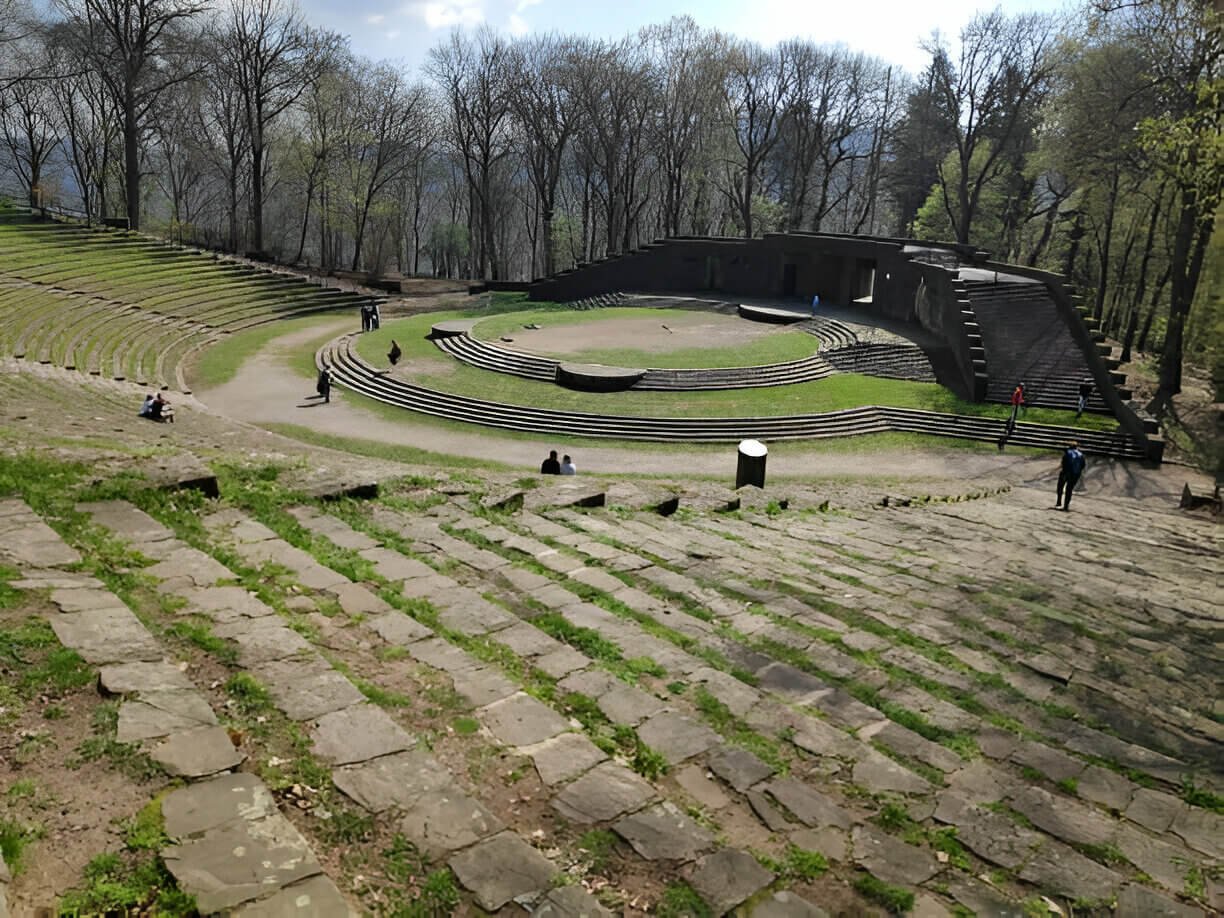
Thingstätte is an amazing outdoor amphitheater located atop a hill with a view of Heidelberg. Tucked hidden in the enormous, lush forest, you can drive up to almost the summit and stroll the remaining distance, or you can hike along the Philosophers’ Way.
The enormous building, which is just one of Heiligenberg’s many attractions, was built in 1935, during the Third Reich. It was inaugurated by none other than Joseph Goebbels and was the site of both unique theatrical productions and propaganda events related to the brief Thingspiel movement. This served to legitimize Nazi ideology and culture while also romanticizing German folklore.
The arena hosted jazz concerts by American forces following World War II, and then Walpurgis Night gained popularity in the 1980s. The amphitheater’s nearly infinite stone benches continue to draw sizable crowds each year thanks to its fire dancers and jugglers. If you have the time, it is highly recommended that you hike to Thingstätte because of its incredible size and the breathtaking surroundings.
11. German Pharmacy Museum

On the grounds of Heidelberg Castle sits the German Pharmacy Museum, a fairly unique but fascinating location to explore. Its vast collection of relics and displays remarkably spans more than two millennia of herbal medicine use.
Very nicely done, the twelve or so chambers are pleasantly furnished with vintage pharmaceutical kits, porcelain receptacles, and pieces of old machinery hanging on the walls. Some interesting tools were used for blending and distilling, while others were used to ground plants or make mineral cures.
The fact that several rooms in the tiny museum are designed to resemble apothecaries from the eighteenth and nineteenth centuries is what makes it such a delightful place to explore. Don’t forget to take in the 20,000 objects on display, as admission to the castle includes them.
10. Heiligenberg
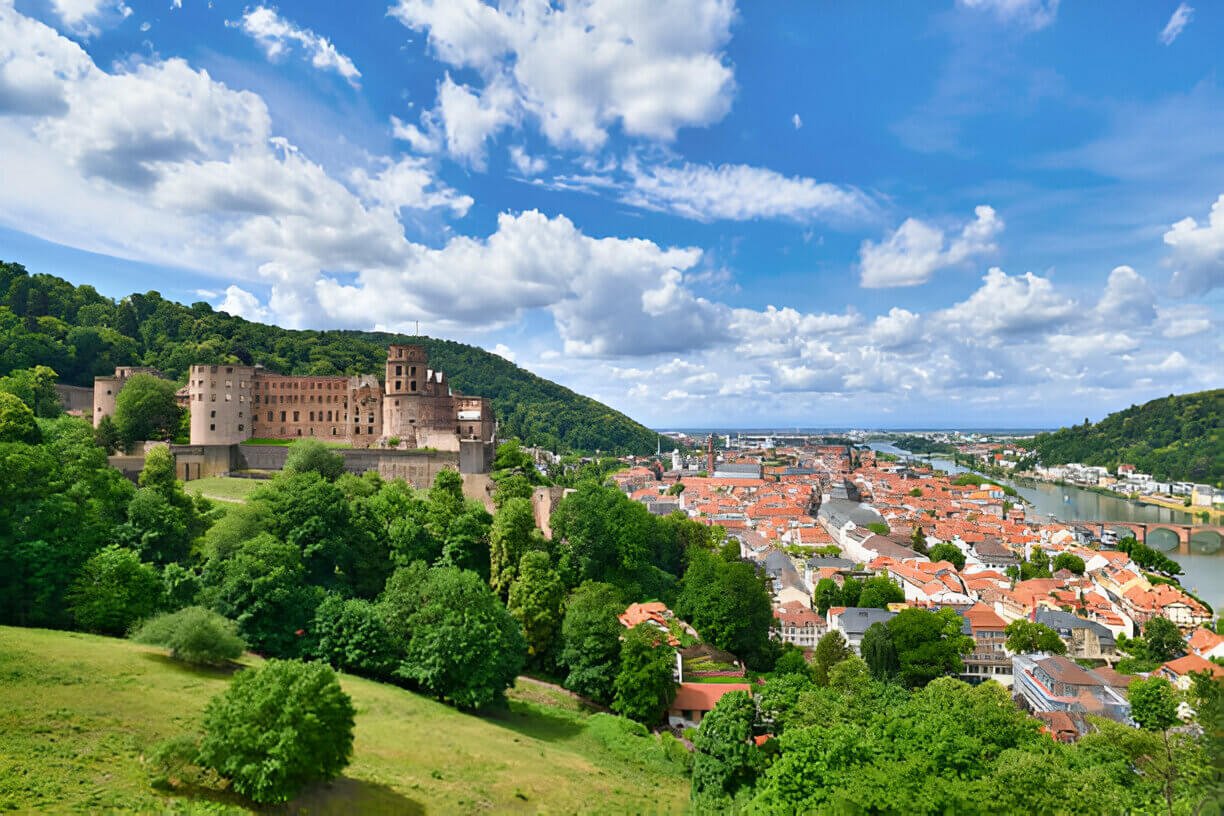
On the north bank of the Neckar River, Heiligenberg, also referred to as All Saints’ Mountain, towers over the city. The peak is known for its defensive location and has long been appreciated for its stunning views of the Rhine Valley plains and the river.
Excavated artifacts from the Neolithic Period have been discovered. Explore ruins of medieval monasteries, a Roman temple from antiquity, and a 4th-century B.C. Celtic fort. Also on display is the Thingstätte, an outdoor theater constructed during the Third Reich.
09. Heidelberg Castle
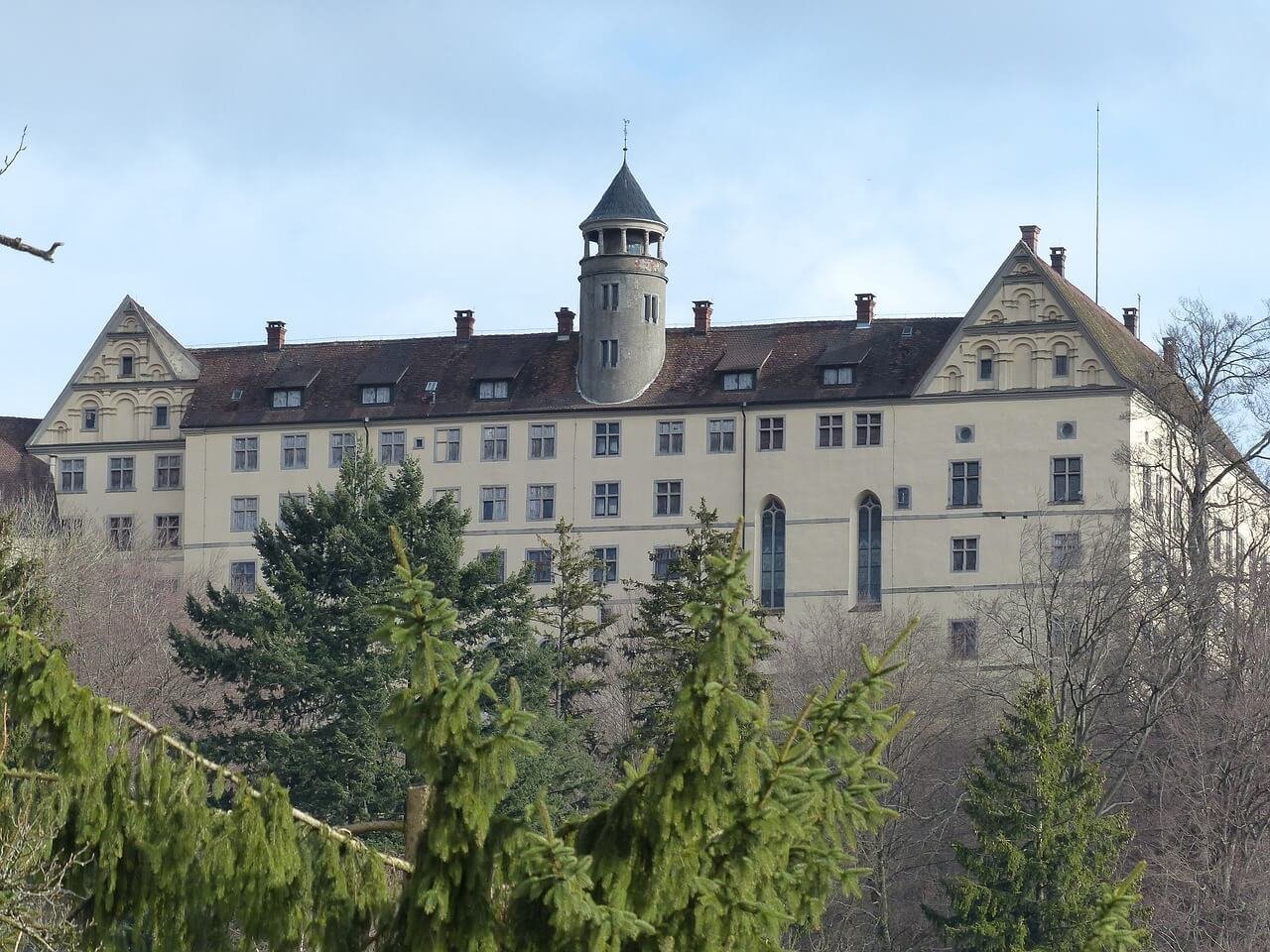
Heidelberg Castle, a massive castle that overlooks the riverbank city below, is one of Germany’s most imposing structures. Its expansive grounds and gardens stretch across the hillside. Heidelberg’s imperial rulers originally lived in its reddish red sandstone buildings, which are a joy to roam around.
The majority of the present castle was constructed during the Renaissance, although the site’s oldest foundations date back to the 1200s. It has seen multiple renovations and expansions over the ages, with scars from lightning strikes, fires, and battles. Numerous authors, painters, and poets have been enthralled and inspired by the romantic remains of the schloss because of its immense size, grandeur, and splendor.
In addition to exploring the courtyard and taking in the breathtaking architecture, guests can explore several exquisitely refurbished historic rooms. For example, the opulent King’s Hall, designed in the Gothic style, showcases how royalty formerly lived and hosted guests. Additionally, this location boasts the world’s largest wine barrel, which is a big ol’ barrel.
Heidelberg Castle, the focal point of most visitors to the city, also features some beautiful grounds that you can explore. You have a commanding view of the surrounding city, river, and wooded valley from their prominent hillside location.
08. Heidelberg Altstadt
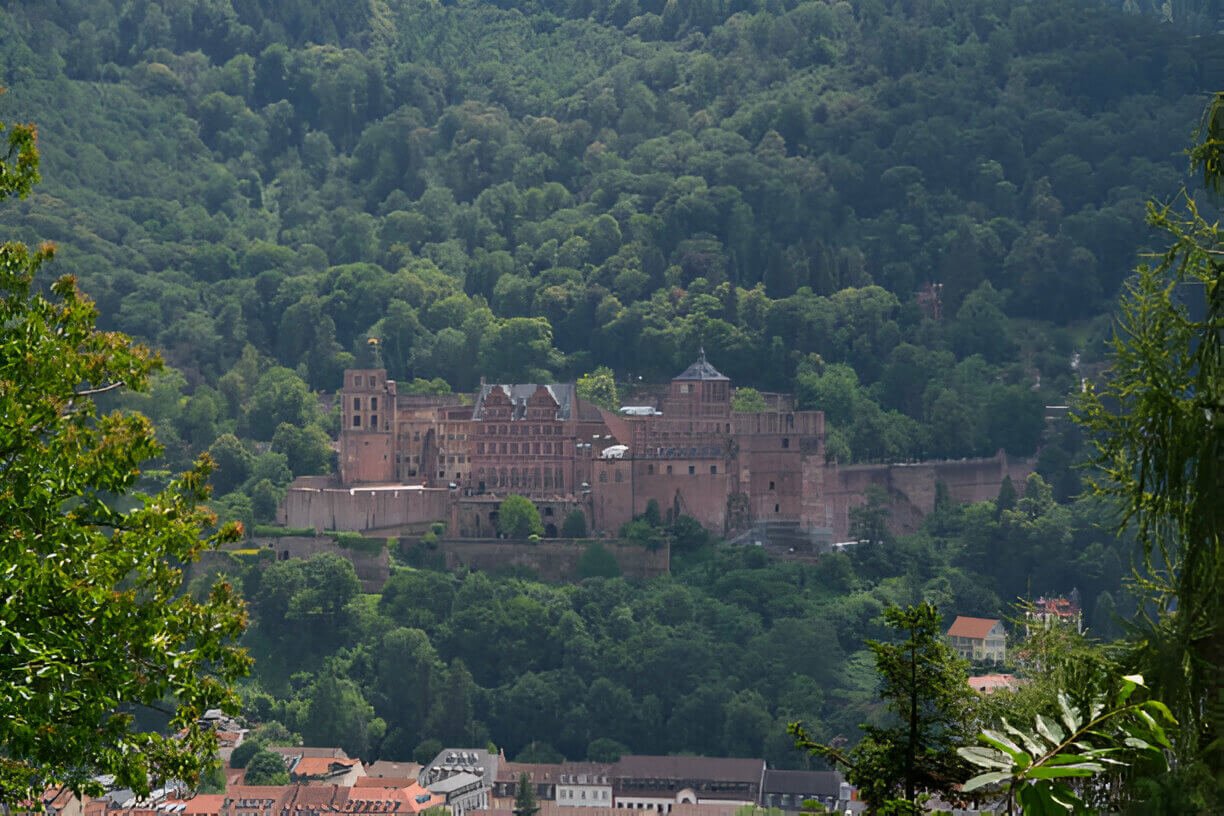
The Altstadt, the city’s oldest district, is located just beneath the castle. It runs a mile along the river, with Bismarckplatz at one end and Karlstor at the other. The most well-known Heidelberg sights can be found in between the charming mix of baroque buildings, little streets, market squares, stores, eateries, and pubs.
The Old Town was essentially rebuilt in the 18th century after being nearly destroyed by French forces in the 1690s. In contrast to most German cities, it came out of WWII essentially unscathed. The majority of the shops in the Altstadt is concentrated along the Hauptstrasse, which serves as the principal pedestrian thoroughfare.
07. Kornmarkt
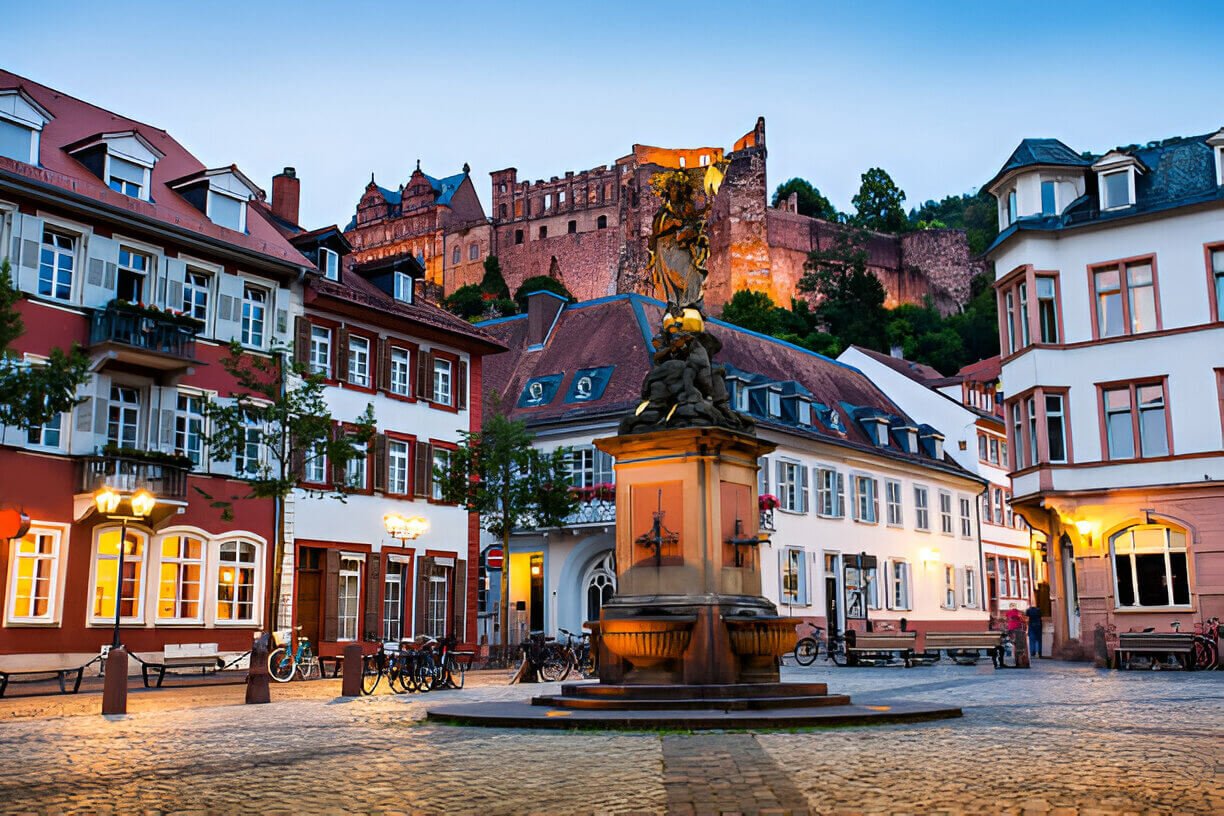
Originally a thriving medieval grain market, the Kornmarkt square was thereafter the location of a Catholic hospital in the sixteenth century. The square’s asphalt still identifies the layout of the hospital chapel.
The Madonna at the Grain Market is a 17th-century monument that was built as a part of a Jesuit effort to spread Catholicism. The Madonna is now considered a magnificent piece of art, the ideal focal point of this charming town plaza.
On the hills above the Kornmarkt, visitors congregate here for meals at outdoor cafés and to take in views of the Heidelberg Castle.
06. Heiliggeistkirche
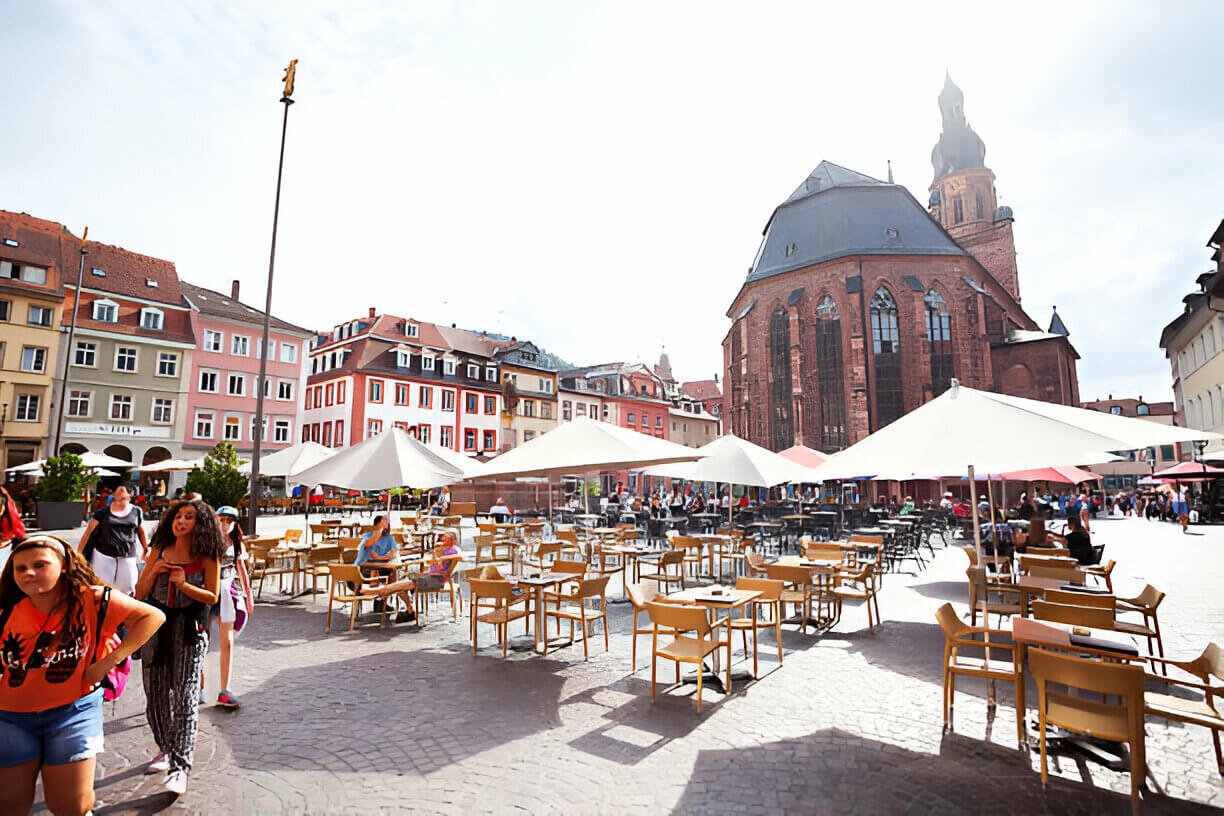
Heidelberg’s most well-known house of worship is the Heiliggeistkirche, also known as the Church of the Holy Spirit, which is situated on the city’s Market Square. The Gothic church’s original building didn’t finish until 1544, having started in 1398.
Following a fire in 1709, the church’s Baroque steeple was erected. To get views of the city, visitors can ascend the 208 steps to the summit of the spire. The Heiliggeistkirche is distinctive in that it has been utilized concurrently by Protestants and Catholics. For more than 200 years, there was a wall dividing the two congregations.
05. Konigstuhl

On the foothills of Königstuhl, also known as Kings Seat Mountain, the second-highest summit in Germany’s low Odenwald mountain range, stands Heidelberg’s renowned castle. Visitors may reach the summit by a historic wooden funicular train and enjoy breath-taking views over the Neckar River Valley and the Black Forest beyond.
At the top is a kid’s play area and restaurant, along with a well-connected system of hiking routes. Kings Seat Mountain is a fantastic place to see the stars because of the pure air. Here, in 1898, the Heidelberg-Königstuhl State Observatory was established.
04. Old University Heidelberg

Given that Heidelberg has long been a renowned hub for education, it would be impossible to visit the city without seeing the Old University. It is centered on Universitatsplatz in the Altstadt and offers you the opportunity to see a great museum, the Great Hall, and the student jail.
The esteemed institution, which is the oldest in Germany, was established in 1386 as a result of directives from Pope Urban VI. But the massive structure that is today called the “Alte Universitat,” or Old University, wasn’t built until 1712. The impressive museum within teaches visitors about the university’s 600-year history, and you can view the student jail there.
The Old Assembly Hall, which has numerous exquisite wood panelings, exquisite paintings, and portraits of the university’s founders, is the true show-stopper. Vibrant murals depicting the four colleges of the Old University—theology, law, medicine, and philosophy—also cover the ceiling. We felt that the entrance charge was well worth it just for this stunning chamber.
03. Funicular Railway Heidelberg
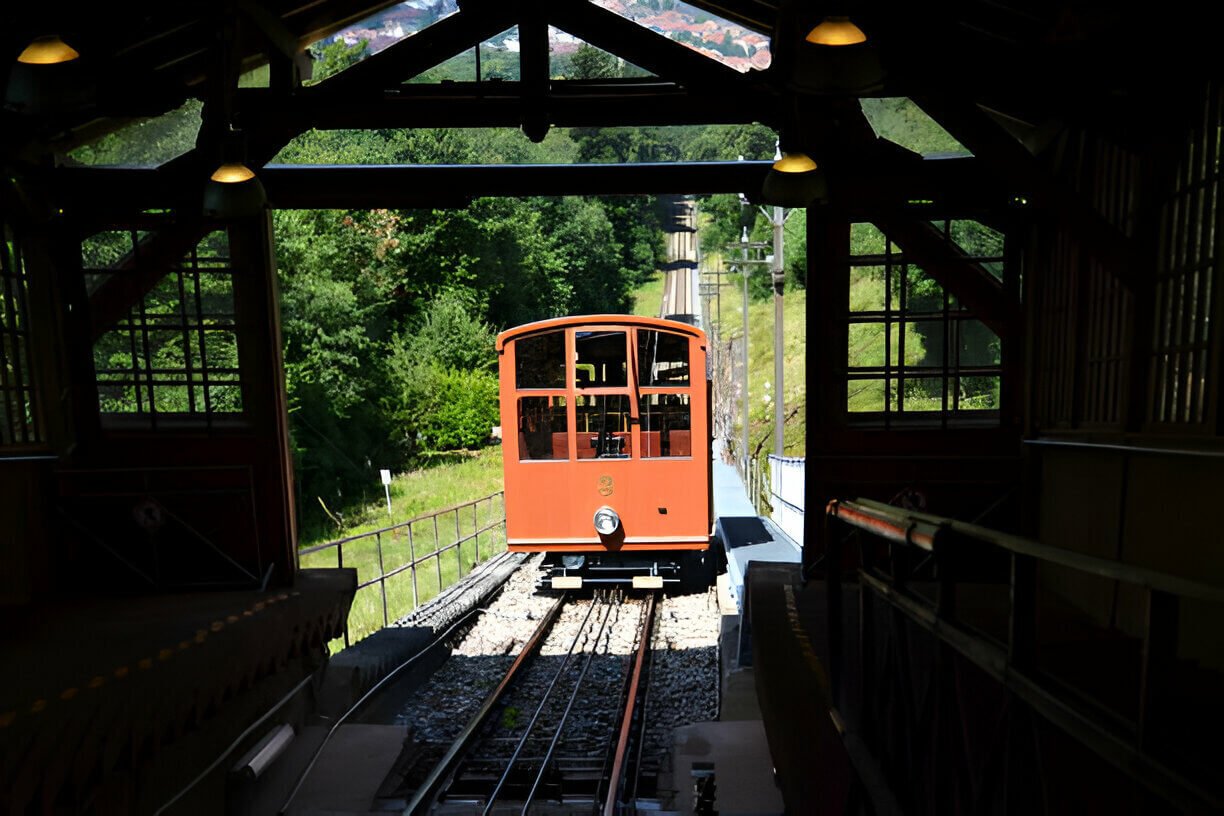
Among Heidelberg’s most visited tourist destinations are the funicular trains. More than a million people ride the historic funicular railroads each year, taking in the breathtaking views of Heidelberg and the Neckar valley along the route and at each stop. From the Königstuhl viewpoint, you can even see the Palatinate wine path spread out into the Rhine lowlands.
One of the most contemporary funicular railways in Germany, the lower train begins at the old town’s Kornmarkt and travels through the Castle (Schloss) station to Molkenkur. From there, you may proceed to the Königstuhl, the town’s highest point at more than 550 meters, using one of the oldest electric funicular trains.
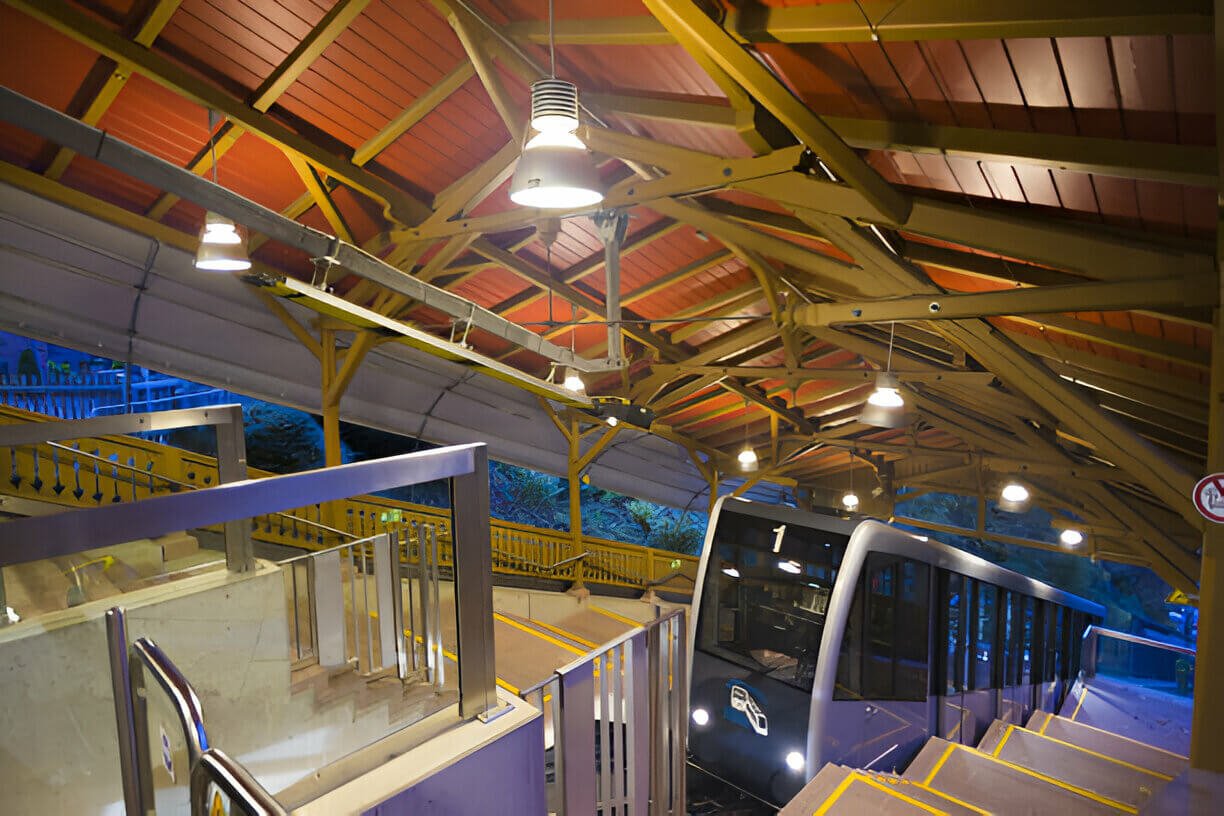
The Heidelberg funicular railroads offer a unique experience while traveling on them. The Heidelberg funicular trains are a major draw for visitors and locals alike, and as such, they are run separately by Heidelberger Straßen- und Bergbahn on behalf of Stadtbetriebe Heidelberg local transport services and are not a part of a larger public transportation system. As a result, the rates differ from those of, say, RNV tickets. A number of elements are included in the rates, including the fact that the Heidelberg funicular railway is one of the longest in Germany and that you may travel on both the newest and oldest trains, with original railcars going back to 1907.
02. Philosophenweg
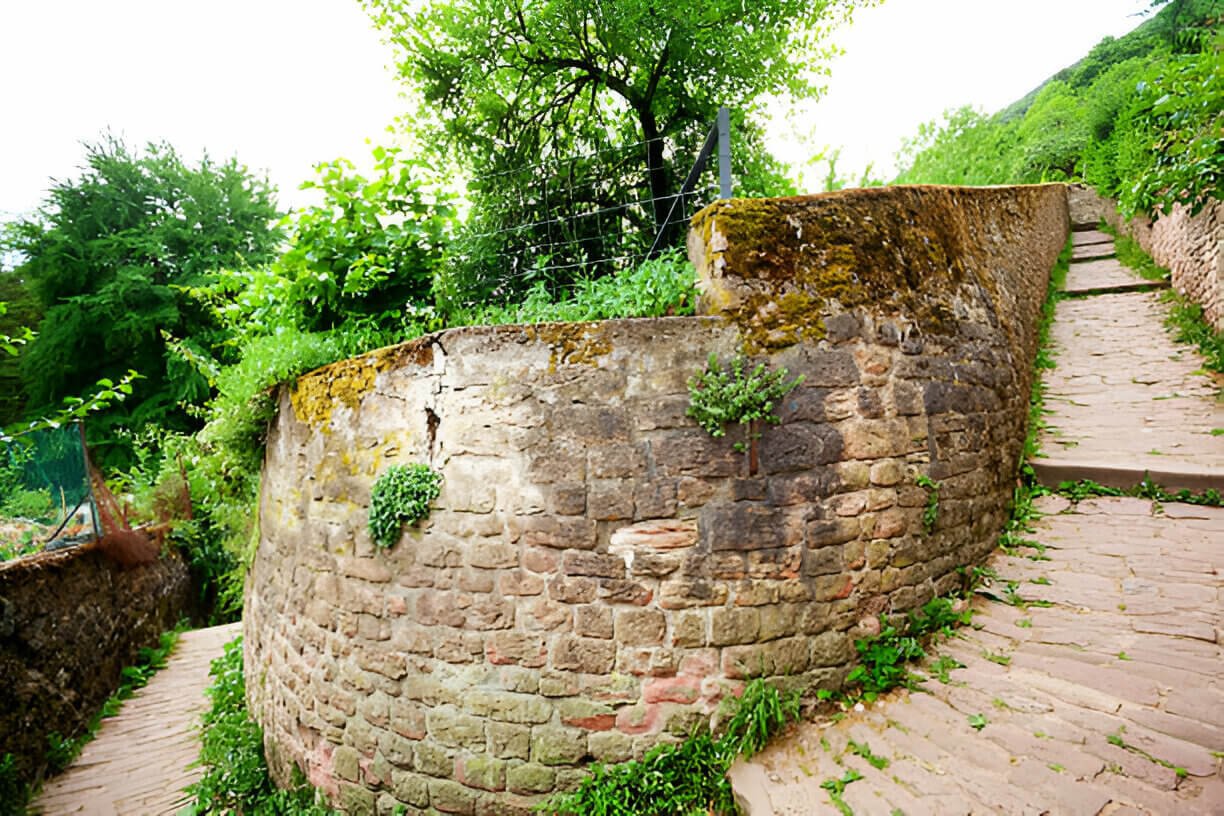
The zigzagging Schlangenweg, also known as the Snake Path, climbs up to the Philosophenweg, a lovely path that hugs the edge of All Saints’ Mountain, and is situated north of the Old Bridge.
The Philosophers’ Way has the name of the esteemed scholars and instructors who have strolled and conversed along this path for hundreds of years, hailing from the university town. The Philosophers’ Garden, a shaded area with flourishing warm-weather flora, is where the walking trail comes to a conclusion.
Many people compare the vistas of the river valley and the city’s red-topped roofs to those of Tuscany, in Italy.
01. Heidelberg Marktplatz
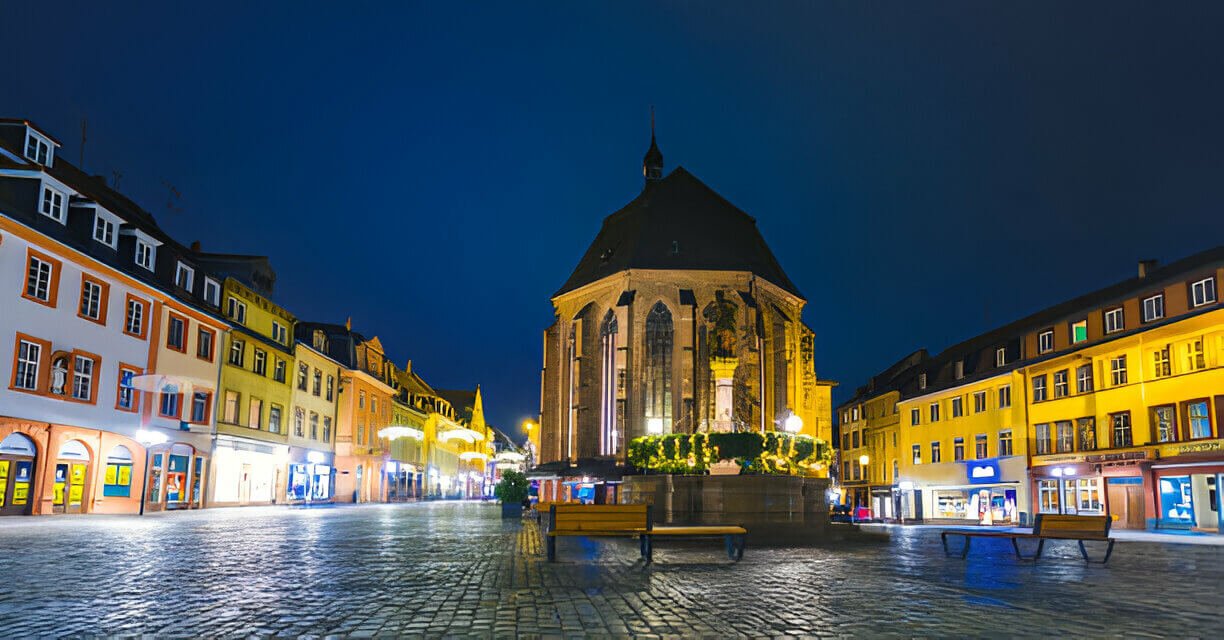
Since the Middle Ages, the Heidelberg Marktplatz, which is situated in the heart of the Old Town, or Altstadt, has served as the primary hub for community gatherings. Once upon a time, accused criminals were dragged to their death from either the church or the town hall on one side of the market square.
Heretics were executed by burning at the stake. Some were left shackled to the Herkulesbrunnen, a Baroque fountain with a statue of Hercules, which is still in place. These days, shoppers congregate around the Marktplatz. This is where you can get fresh produce, fish, and flowers on Wednesday and Saturday mornings.
Map of Heidelberg, Germany
Where to Stay in Heidelberg
Heidelberg’s ancient Altstadt is the ideal place to stay because the city is compact and easily walkable. Without even needing to board a bus, you can see the majority of its major attractions from here, including the castle and the bustling university district.
The four-star Arthotel Heidelberg is a pleasant, comfortable and central location to stay. Once you get past the building’s imposing appearance, you’ll discover roomy, contemporary accommodations, a superb restaurant, and a calm rooftop patio. Recommendations for things to see and do in the region are readily available from the welcoming staff as well.
The Hotel am Schloss is aptly called as it is located even closer to the castle. The three-star hotel, located at the base of the funicular leading to Heidelberg Castle, is an excellent value choice. Visitors can also take in breath-taking vistas of its fiery red walls, which rise well above it, from the rooftop patio. In addition to its amazing location and views, you’ll enjoy a nice stay thanks to the basic but clean rooms and large buffet breakfasts.
How to get there
Accessible between Mannheim and Frankfurt, the vibrant academic town is nestled in the narrow Neckar Valley. The latter is around an hour away from the former, which is only a fifteen-minute rail journey away.
Frankfurt Airport serves as the primary international airport for the region, making both of them significant transport hubs. Stuttgart is about a ninety-minute train ride away and has a busy airport to the southeast as well.
Once you’re there, Altstadt, the city’s historic district, is a pleasure to stroll through.
Approximate travel times:
- Mannheim: 20 minutes by road, 20 minutes by rail
- Frankfurt: one hour by driving and one hour by train
- Stuttgart: 1.5 hours by driving, 1 hour and 30 minutes by train
- 1.5 hours by vehicle and 2 hours by train to Strasbourg, France
- Freiburg: two hours by driving and two hours by train
- Munich is three hours by train and three hours by automobile.
- Five hours by automobile and three hours and thirty minutes by train to Paris, France
- Travel time to Zurich, Switzerland, is 2.5 hours by vehicle and 2 hours 30 minutes by train.
Best Time to Visit Heidelberg
Heidelberg, a picturesque university city situated in the narrow Neckar River Valley, is most popular to visit during the long, hot, and mainly dry summer months. The usual temperature from June to August is between 22 and 24°C (71 and 75°F), which is perfect for winery visits and riverboat excursions to see castles.
Heidelberg Castle has an extensive program of plays, concerts, and operas, giving the city’s historical center a charming, vibrant atmosphere despite its crowded and expensive nature. The Heidelberg Fruhling Liedfestival also features hundreds of classical music concerts.
The best seasons to visit are spring and fall, when the average temperature stays between 15 and 20°C (59 and 68°F). During these seasons, the surrounding trees’ colors are breathtaking, and in October, you may try some of the delectable local products at the Heidelberg Wine Village.
The growing cold and rain from November onwards turned off most people. Still, the month-long Christmas market with its vibrant decorations and warm wooden cabins offering handicrafts, presents, and seasonal fare does serve to brighten the mood.


